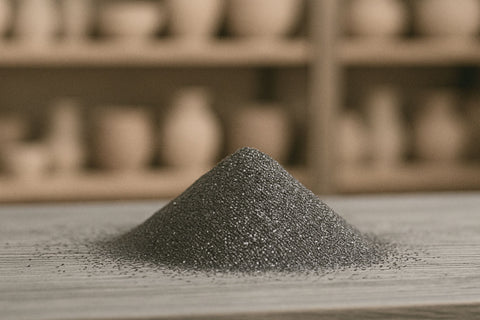introduction: what are mason stains, and how do they change the way we work with clay?
mason stains are powdered ceramic colorants made from a mix of oxides and a carrier material. they’re designed to handle high kiln temps without losing their intensity, and they can be added to clay bodies, glazes, or underglazes for consistent, long-lasting color.
a quick history
mason stains were first developed by mason color works, a company that's been around since 1842. their goal was to develop stable, vibrant colors that wouldn’t break down in the kiln - and they did. the result is what most potters now know as mason stains.
for a full breakdown of available colors and tips, mason color works has a full stain reference guide on their site - worth bookmarking if you plan to use stains often.

why add mason stains to clay?
coloring the clay itself gives your work a completely different look than just using surface decoration. the color runs through the whole piece, which opens up creative options like layering, carving, or slicing into the clay for patterns and contrasts.
how to add mason stains to clay
-
choose your color
pick a stain that fits the look you're going for and is compatible with your clay body. -
weigh it out
start with 1–10% of the dry clay weight, depending on how intense you want the color. this video walks through the measuring process. if you're working a lot with raw materials, the ohaus triple beam balance is a solid investment. otherwise, a basic kitchen scale will get the job done. -
mix it in
you can wedge the stain into dry clay or mix it into wet reclaimed clay. dry clay may get crumbly if it’s already low in moisture, so wet mixing might be easier if you're going for a high pigment load. -
test first
always fire a small test before committing. color can shift during firing, so make sure it lands where you want it. this video walks through how to make clay test samples using different amounts of mason stain in the clay body.

tips for working with colored clay
-
mask up
wear a NIOSH-certified N95 respirator when handling dry stain powder or bone-dry clay — the dust can be harmful to inhale. mason color works has safety data sheets on their website for each color. if you need more info than what’s listed there, you can contact them directly. -
mix thoroughly
unless you're going for a marbled effect, make sure the stain is evenly distributed to avoid streaks. -
write it down
keep notes on your ratios and firing results - it’ll save you time later if you want to repeat the effect.
conclusion




